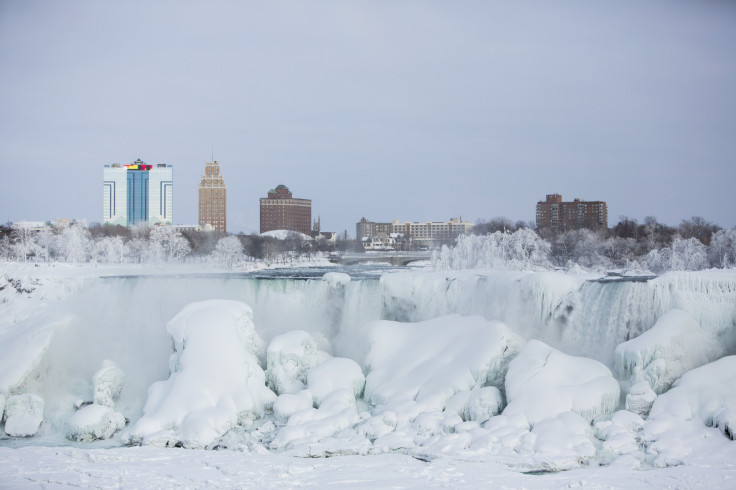Frozen Niagara Falls Tourism: How To Get There, Best Viewing Spots And Preparing For The Cold

Niagara Falls has frozen over, providing visitors with a rare opportunity to experience the famed tourist site in a new light – but it won’t be that way forever. Visitors wanting to catch a glimpse of the beautiful and bizarre winter phenomenon before the great thaw should head there soon but come prepared to battle subzero temperatures and crowds.
Niagara Falls, which straddles the U.S.-Canada border, is among the most visited tourist attractions in the world, drawing an estimated 22.5 million people to its majestic waters every year. This winter, tourists have flocked to the frozen falls for the second year in a row after a string of mild winters that failed to produce the awe-inspiring ice sheets, according to the Associated Press. "The snow-covered falls is getting a lot of attention, and we are seeing crowds in Niagara Falls State Park," said Michelle Blackley, communications manager for Niagara Falls.
But with temperatures falling well into the single digits on Friday, visiting the famed falls isn’t for the faint of heart. Those willing to brave arctic conditions should bundle up. Down jackets provide much-needed insulation and are easier to compress and layer. Insulated vests also work well underneath heavier outer coats, Lifehacker suggests. Wearing a pair of runners tights or long underwear can also help to keep the heat in.
Niagara Falls is accessible from many travel hubs on both the Canadian and U.S. sides and can be reached by car or through any one of the many local airports. Toronto’s Pearson International Airport is the closest Canadian airport to Niagara Falls and is served by all of the major European and North American airlines. Shuttles can transport fliers to the falls for between $89 and $222, depending on the number of people in the party, according to TripAdvisor. For visitors flying into New York, Buffalo Niagara International Airport is the easiest route, however with fewer major carriers and direct flights. Travelers getting to the falls by car should take the I-190 from Buffalo on the American side and the Queen Elizabeth Way on the Canadian side.
A long-running debate has been waged between the U.S. and Canada over which side is best for viewing the falls. Generally, the Canadian side of the falls is better for photographing the falls, however tourists on the U.S. side can get much more up close and personal.
Tourists expecting to see the falls completely frozen over will be disappointed, however. That’s only happened once in the past 150 years, according to Fox8 Cleveland.
© Copyright IBTimes 2024. All rights reserved.






















